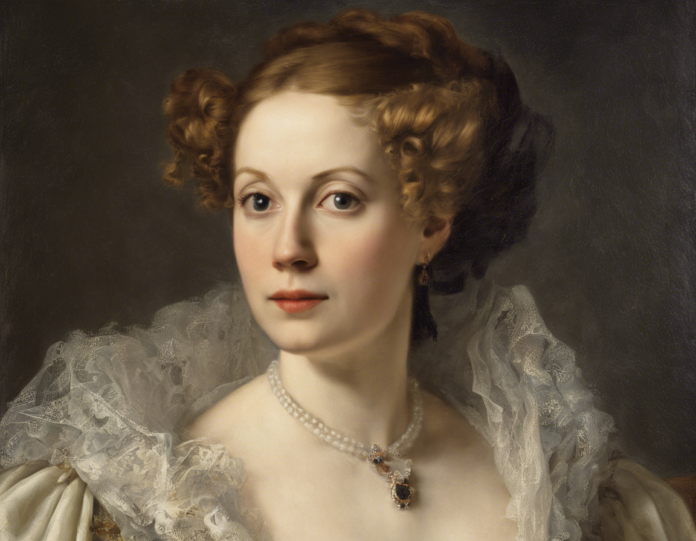Henry James’s novel, “The Portrait of a Lady,” published in 1881, is a masterpiece of American and English literature, known for its complex characters and intricate exploration of social themes. In this article, we will delve into the key themes that the novel touches upon, providing a deeper understanding of this timeless work.
The Corrupting Influence of Wealth and Privilege
One of the central themes of “The Portrait of a Lady” is the corrupting influence of wealth and privilege. The protagonist, Isabel Archer, a young American woman, inherits a large fortune and travels to Europe, where she is exposed to the seductive lifestyle of the European aristocracy. As she becomes entangled in the world of the rich and powerful, Isabel’s pursuit of independence and self-fulfillment is gradually eroded by the materialistic values of her social circle.
The Consequences of Self-Delusion
Another significant theme in the novel is the consequences of self-delusion. Isabel Archer is a woman of strong will and independence, yet she is also prone to idealistic fantasies and romantic illusions. Her inability to see the true nature of those around her, particularly the manipulative Gilbert Osmond, leads to tragic consequences that shape the course of her life.
The Conflict Between Freedom and Responsibility
James explores the theme of freedom versus responsibility through Isabel’s journey. As a woman living in the 19th century, Isabel faces societal expectations and constraints that limit her choices and agency. Her struggle to balance her desire for autonomy with her sense of duty towards others reflects the broader social tensions of the time.
The Search for Identity and Authenticity
Identity and authenticity are recurring themes in “The Portrait of a Lady.” Isabel’s quest for self-discovery and individuality is hindered by the oppressive social norms that seek to mold her into a predefined role. Her inner conflict between staying true to herself and conforming to societal expectations drives much of the novel’s emotional depth.
The Complexity of Human Relationships
At the heart of the novel lies the exploration of the complexity of human relationships. James portrays the intricate dynamics between individuals, highlighting the power struggles, hidden motives, and emotional entanglements that define human interaction. The strained relationships between Isabel, Osmond, and other characters reveal the nuances of love, betrayal, and manipulation.
The Critique of Gender Roles and Marriage
“The Portrait of a Lady” offers a critique of gender roles and marriage conventions prevalent in the Victorian era. James exposes the limitations imposed on women by a patriarchal society and challenges the idea of marriage as a means of social advancement rather than a union based on love and mutual respect. Through Isabel’s experiences, the novel calls into question traditional notions of femininity and domesticity.
The Illusion of Autonomy
Lastly, the theme of autonomy is central to the novel’s exploration of individual agency. Despite Isabel’s outward appearance of independence, she is ultimately ensnared in a web of manipulation and control, challenging the notion of free will in a world rife with hidden agendas and societal pressures. Her struggle to break free from these constraints illuminates the fragile nature of autonomy in a society governed by class and privilege.
In conclusion, “The Portrait of a Lady” by Henry James is a rich tapestry of themes that resonate with readers across generations. From the corrupting influence of wealth to the complexities of human relationships, the novel offers a profound examination of the human condition and the struggle for autonomy and authenticity in a society marked by social hierarchies and gender expectations.
Frequently Asked Questions (FAQs)
- What is the significance of the title “The Portrait of a Lady”?
-
The title alludes to the idea of portraying a woman, in this case, Isabel Archer, as a complex and multi-dimensional character whose inner world is explored in depth.
-
How does Henry James depict social class in the novel?
-
James portrays social class as a defining factor in the characters’ lives, highlighting the disparities in wealth and privilege that shape their interactions and choices.
-
What role does Europe play in the novel?
-
Europe serves as a backdrop for Isabel’s transformation and disillusionment, symbolizing a world of sophistication and allure that ultimately proves to be deceptive.
-
Why is Isabel Archer considered a feminist character?
-
Isabel’s defiance of societal norms and her pursuit of independence mark her as a feminist figure, challenging traditional gender roles and advocating for women’s agency.
-
How does the theme of self-delusion manifest in the novel?
-
Self-delusion is evident in Isabel’s romantic ideals and her reluctance to confront uncomfortable truths about the people around her, leading to her eventual downfall.
-
What is the role of Osmond in Isabel’s life?
-
Gilbert Osmond represents the oppressive forces of conformity and manipulation that threaten Isabel’s autonomy, serving as a primary antagonist in her story.
-
How does the novel reflect the societal constraints of the Victorian era?
-
Through Isabel’s struggles with marriage and societal expectations, the novel critiques the restrictive gender roles and moral standards of Victorian society.
-
What lessons can readers take away from “The Portrait of a Lady”?
-
The novel prompts reflection on the consequences of personal choices, the complexities of human relationships, and the enduring quest for identity and authenticity in a world filled with illusions.
-
Is “The Portrait of a Lady” considered a timeless classic?
-
Yes, the novel continues to be revered for its nuanced characters, intricate narrative, and profound exploration of universal themes that resonate with readers of all eras.
-
How does Henry James’ writing style contribute to the themes of the novel?
- James’ dense, psychological prose and intricate narration enhance the novel’s themes of inner conflict, social critique, and the complexities of human nature, immersing readers in the characters’ emotional journeys.




